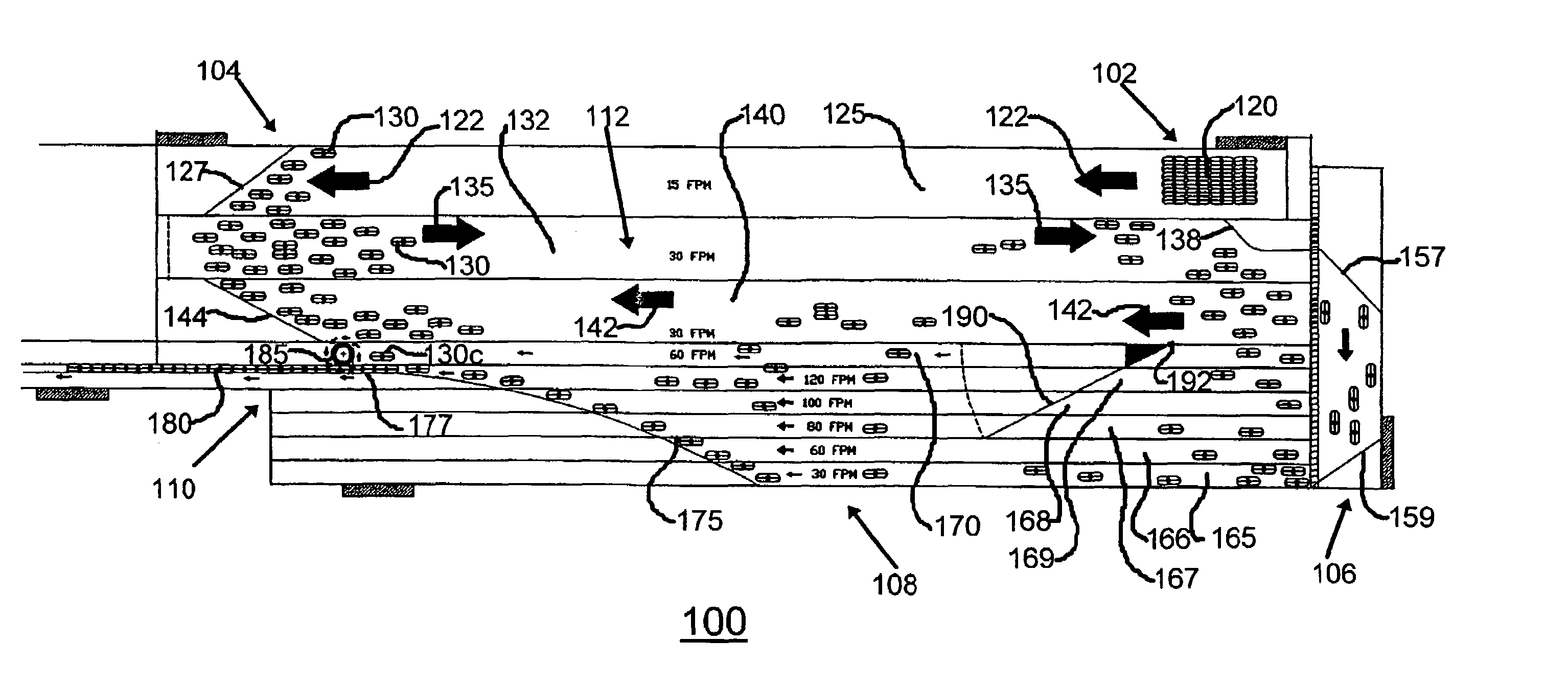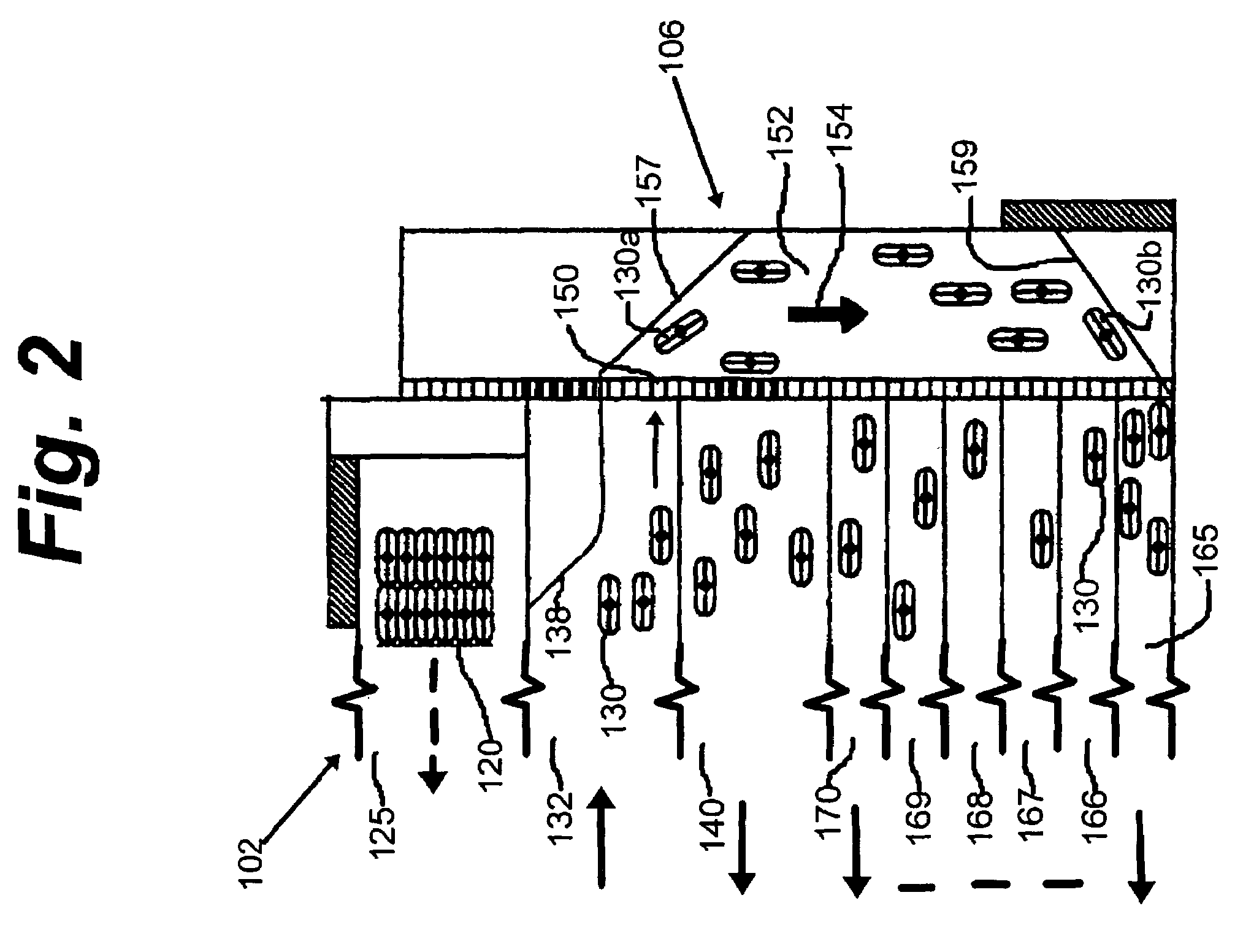Accumulating conveyor system
a conveyor system and accumulator technology, applied in the field of conveyor systems, can solve the problems of exacerbated problems, various approaches to the noted problems in the prior art have proved unsatisfactory, and the product items are prone to slipping, so as to eliminate the undesirable accumulator effect, and reduce the occurrence of slipping
- Summary
- Abstract
- Description
- Claims
- Application Information
AI Technical Summary
Benefits of technology
Problems solved by technology
Method used
Image
Examples
Embodiment Construction
[0034]FIG. 1 is a simplified schematic representation of a specific illustrative embodiment of the invention. As shown in this figure, an accumulating conveyor system 100 is generally configured to have a product receiving section 102, a product turnaround section 104, a product redistribution section 106, a product singularization section 108, a discharge section 110, and an accumulation section 112. In the operation of the specific illustrative embodiment of the invention, a plurality of product items in a batch 120 are deposited at product receiving section 102. Batch 120 of product items is transported in the direction of arrows 122 on conveyor surface 125 until it reaches product turnaround section 104.
[0035]At product turnaround section 104, batch 120 encounters a guide rail 127 whereupon the batch is disbanded into separated individual ones of product items 130. By operation of guide rail 127, product items 130 are diverted onto conveyor surface 132, where the direction of tr...
PUM
 Login to View More
Login to View More Abstract
Description
Claims
Application Information
 Login to View More
Login to View More - R&D
- Intellectual Property
- Life Sciences
- Materials
- Tech Scout
- Unparalleled Data Quality
- Higher Quality Content
- 60% Fewer Hallucinations
Browse by: Latest US Patents, China's latest patents, Technical Efficacy Thesaurus, Application Domain, Technology Topic, Popular Technical Reports.
© 2025 PatSnap. All rights reserved.Legal|Privacy policy|Modern Slavery Act Transparency Statement|Sitemap|About US| Contact US: help@patsnap.com



